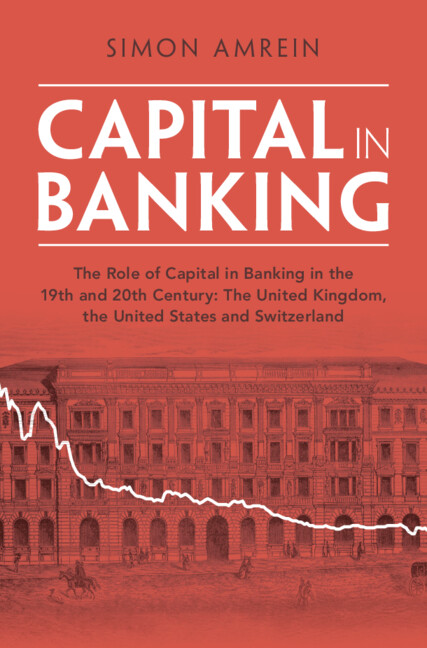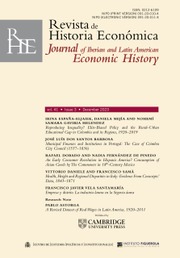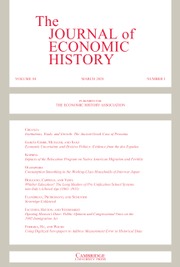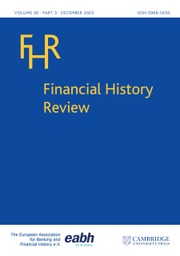Capital in Banking
Capital in Banking traces the role of capital in US, British, and Swiss banking from the 19th to the 21st century. The book discusses the impact of perceptions and conventions on capital ratios in the 19th century, the effects of the First and Second World Wars, and the interaction of crises and banking regulation during the 1930s and the 1970s. Moreover, it emphasises the origins of the risk-weighted assets approach for measuring capital adequacy and explains how the 2007/2008 crisis led to a renaissance of unweighted capital ratios. The book shows that undisclosed reserves, shareholders' liability, and hybrid forms of capital must be considered when assessing capital adequacy. As the first long-run historical assessment of the topic, this book represents a reference point for publications in economics, finance, financial regulation, and financial history. This title is also available as Open Access on Cambridge Core.
- Provides a data set on capital in the banking sector over three centuries in three countries
- Discusses the role of ideas, wars, and crises in shaping the perception of capital in banking
- Serves as the main publication on the market on the topic of capital in banking in a historical perspective, as it explains how we went from simple rule of thumbs to a highly complex and extensive set of banking regulations
- Title is open access
Reviews & endorsements
'Capital in Banking tells the insightful story of bank capital in the United States, United Kingdom, and Switzerland from the inception of modern joint-stock banking until the introduction of the Basel Accords. Amrein's book is compulsory reading for banking scholars, central bankers, and regulators.' John Turner, Author of Boom and Bust: A Global History of Financial Bubbles
'The Global Financial Crisis of 2008 reminded us, if needed be, of the crucial importance of capital in banking. Simon Amrein unveils the thinking, context and events leading to its dramatic fall from the mid-nineteenth to the late twentieth century in three major financial powers, the United States, the United Kingdom and Switzerland. A fascinating story and a must read for practitioners and regulators alike.' Youssef Cassis, Professor, European University Institute, Florence
Product details
January 2025Adobe eBook Reader
9781009276863
0 pages
This ISBN is for an eBook version which is distributed on our behalf by a third party.
Table of Contents
- Part I. Introduction:
- 1. The scope of this book
- 2. The role and relevance of capital in banking
- 3. Chapter outline
- Part II. Capital Ratios in the Long Run:
- 1. Capital ratios since 1840
- 2. The problems of constructing long-run time series
- 3. Structural changes in balance sheets
- 4. Hidden reserves
- 5. Extended Shareholder Liabilities
- Part III. The 19th Century: How Ideas Shape Capital Structures:
- 1. Early banking literature: shared roots, different trajectories
- 2. England: balancing the interests of shareholders and depositors
- 3. Switzerland: transparency in the absence of regulation
- 4. United States: capital requirements from the very beginning
- 5. Concluding remarks
- Part IV. Two World Wars: Overturning Conventions:
- 1. Wartime dynamics of balance sheets
- 2. Assets side: financing wars
- 3. Liabilities side: deposits and capital issuances
- 4. British banking and capital: the absence of a topic
- 5. Amalgamations movement in England
- 6. During and after the second world war: banking without capital
- 7. Switzerland: the demise of guidelines – and the rise of rules
- 8. After the first world war: back to normal
- 9. The importance of formal capital requirements
- 10. The United States: the birth of risk-weighted assets
- 11. From deposits to assets: a new supervisory focus
- 12. Categorizing assets according to risk
- 13. Concluding remarks
- Part V. How Crises Drive Regulation:
- 1. The international environment and regulatory convergence
- 2. From informal to formal: the regulation and supervision of banking and capital in the United Kingdom
- 3. The irrelevance of capital:
- 1945 to 1973
- 4. The relevance of capital: the secondary banking crisis
- 5. The banking acts of 1979 and 1987
- 6. Regulation in Switzerland – and how it was influenced
- 7. Banking legislation in the 1930s
- 8. The evolution of capital regulation:
- 1934–1991
- 9. The influence of banks on the evolution of banking regulation
- 10. The United States: finding the right weight
- 11. Changes in capital adequacy standards in the 1970s
- 12. The Latin American debt crisis as a driver of capital standards
- 13. Concluding remarks
- Part VI. Epilogue:
- 1. Basel capital requirements and the characteristics of leverage before the 2007/2008 financial crisis
- 2. The limits of capital
- Bibliography.






